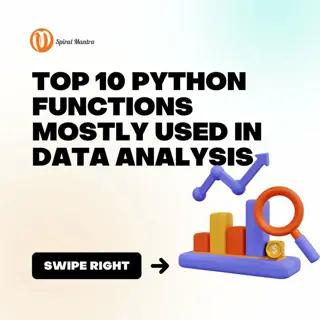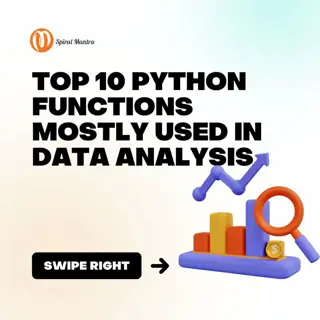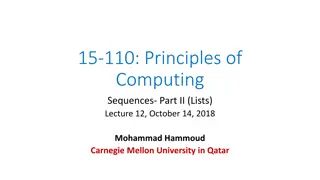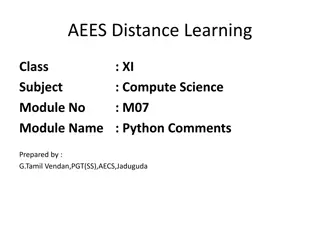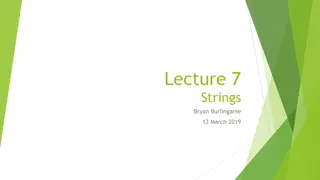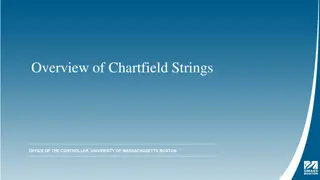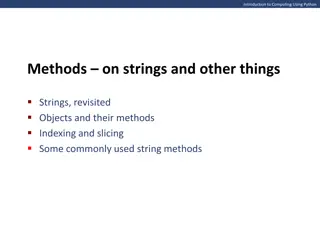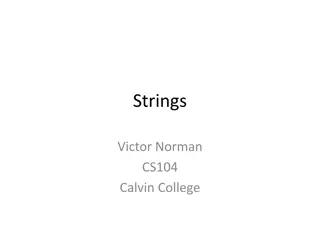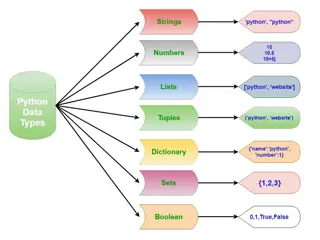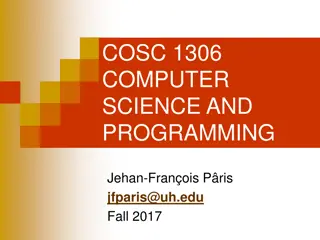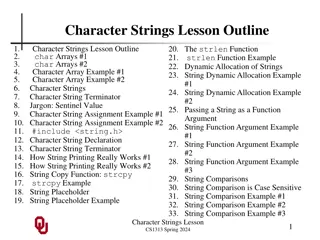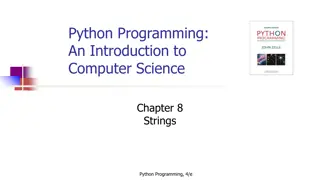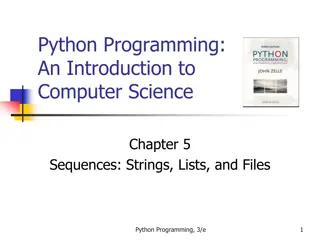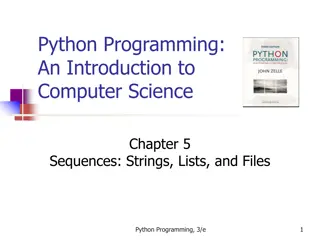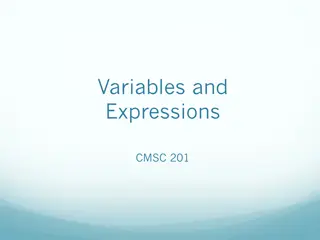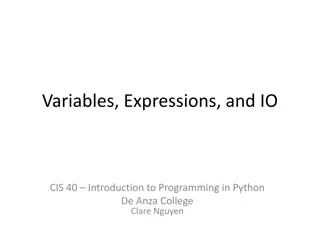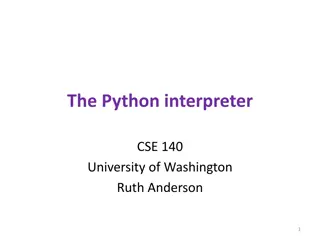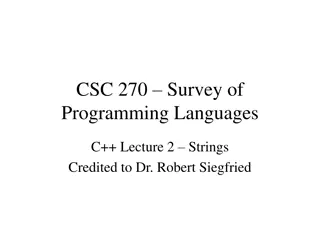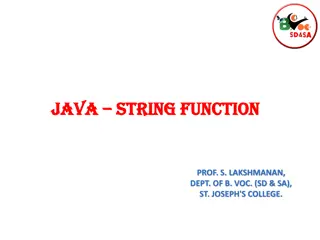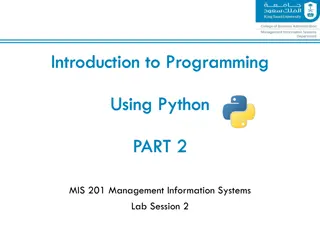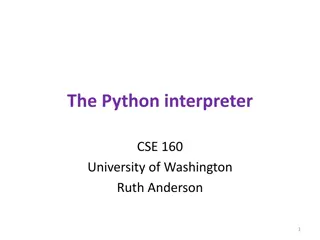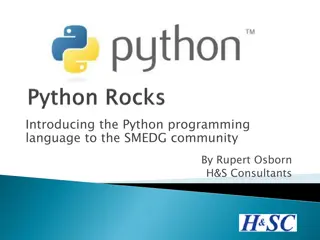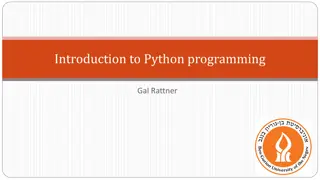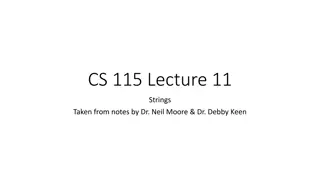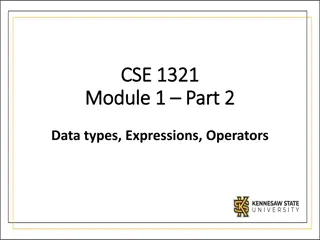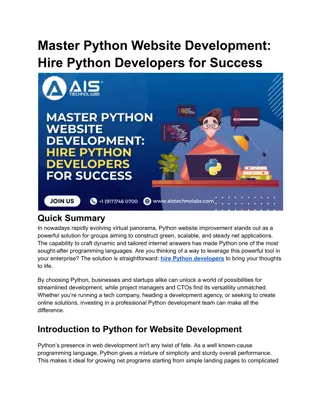Top 10 Python Functions
\nEmbark on a journey through Python's programming landscape with our curated selection of the \"Top 10 Python Functions.\" Dive into the versatility of these functions, from slicing and dicing strings to gracefully traversing complex data structures. Master Python's toolkit and revolutionize your c
5 views • 7 slides
Top 10 Python Functions
\nEmbark on a journey through Python's programming landscape with our curated selection of the \"Top 10 Python Functions.\" Dive into the versatility of these functions, from slicing and dicing strings to gracefully traversing complex data structures. Master Python's toolkit and revolutionize your c
2 views • 7 slides
Python for Delphi Developers Webinar Overview
This webinar provides insights into the growing popularity of Python for Delphi developers. It showcases the potential synergies between Python and Delphi, highlighting the advantages and opportunities for developers in integrating these two languages. The session covers accessing Python libraries f
2 views • 23 slides
Introduction to Creating Lists in Python
In this lecture, the focus is on lists in Python, which are more general than strings as they can contain arbitrary objects. The session covers creating lists with numbers, strings, or mixed elements using square brackets, list comprehension, and built-in list type objects. Additionally, topics such
2 views • 34 slides
Python Comments and Best Practices
Learn the significance of commenting in Python programming to enhance code readability, explain thought processes, find errors, and facilitate code reuse. Explore different methods of commenting in Python, including single-line comments, multi-line comments, and using multi-line strings for comments
0 views • 6 slides
Strings in Python Programming
Strings in Python are sequences of characters with various operations like initialization, accessing, traversal, slicing, and mutability. Learn about basic concepts, such as string initialization using quotes, accessing individual characters, determining string length, traversing strings, slicing su
1 views • 20 slides
Chartfield Strings in University Financial Management
Chartfield strings play a crucial role in organizing university financial data to track revenue and expenses effectively. They consist of various components like business unit, fund, department, program code, and more, each serving a specific identification purpose. By utilizing chartfield strings,
0 views • 10 slides
Object-Oriented Programming (OOP) in Python
Python is a versatile programming language that supports various programming approaches. Object-Oriented Programming (OOP) is a popular method in Python where objects are created to solve programming problems. OOP in Python focuses on creating reusable code, following the principle of DRY (Don't Rep
2 views • 35 slides
Introduction to String Methods in Python
Exploring the manipulation and usage of strings in Python, covering string delimiting, including quote characters in strings, format characters, indexing, slicing, and more. Examples and explanations provided.
1 views • 16 slides
Comparative Analysis of Student Struggle in Python vs. C++ for Small Coding Exercises
An analysis conducted by Nabeel Alzahrani, Frank Vahid, Alex Edgcomb, Kevin Nguyen, and Roman Lysecky compared student struggles in Python and C++ for small coding exercises in introductory programming courses. The study explored the ease of learning Python compared to C++ and the demand for Python
2 views • 17 slides
Introduction to Python for Java Professionals
Explore the transition from Java to Python with key differences, advantages of Python, suitable environments for coding, and a comparison of basic program structures between the two languages. Discover why Python is preferred for machine learning projects and where to write and run Python code onlin
3 views • 15 slides
Strings and Operations in Programming
This content delves into the concepts of strings, their manipulation methods, and various operations related to strings in programming. It covers collection data types, immutable nature of strings, string operations like concatenation and slicing, comparing strings, and practical examples of string
5 views • 29 slides
Python String Manipulations Explained with Examples
In this comprehensive guide, you will learn various string manipulation techniques in Python. From slicing and formatting strings to finding characters and their frequencies, this tutorial covers it all. Explore how to replace, split, join, and strip strings effectively. Dive into practical examples
1 views • 19 slides
Introduction to Basic Python Programming Concepts
In this Fall 2017 course, COSC 1306 - Computer Science and Programming by Jehan-François Périr, students delve into the fundamental concepts of Python programming. The course covers values, data types, strings, and identifying malformed strings in Python code.
0 views • 57 slides
Character Strings in C Programming
Dive into the world of character strings in C programming with topics like string declaration, termination, copying functions, comparisons, and dynamic allocation. Explore how to work with character arrays and pass strings as function arguments for effective programming. Enhance your knowledge throu
0 views • 33 slides
Introduction to Python Strings and Basic Operations
Python Programming introduces the string data type, representing text in programs as a sequence of characters enclosed in quotation marks. This chapter covers operations on strings using built-in functions and methods, sequences and indexing in Python strings and lists, string formatting, cryptograp
1 views • 67 slides
Introduction to Python Programming: Strings, Lists, and Files
This chapter delves into the fundamental concepts of Python programming related to sequences, specifically focusing on strings, lists, and file processing. It covers the representation of strings, various operations that can be performed on them, basic ideas of sequences and indexing for strings and
2 views • 109 slides
Introduction to Python: Explore Python Labs
In this Python Lab series, delve into the fundamentals of Python programming. Discover the origins of Python, its unique features, and how to create and run Python scripts. Engage in hands-on assignments to enhance your Python skills, including experimenting with print statements, loops, and more.
0 views • 5 slides
Python Programming: Strings, Lists, and Files in Computer Science
This chapter delves into the fundamentals of Python programming, focusing on sequences like strings, lists, and files. You will discover how strings are represented, explore operations on them, including built-in functions and methods. The text covers the basics of sequences, indexing, string format
0 views • 109 slides
Strings in Programming
Strings are essential in programming for representing various data types, languages, and programs. They offer unique features like slicing, ranges, and comprehensions. This article explores string literals, different forms of strings, similarity to lists, differences between lists and strings, and s
0 views • 34 slides
Introduction to Variables and Expressions in Python
Today we start Python! Learn about variables, how to create them, assign values, and perform mathematical operations using variables in Python. Understand the rules for naming variables and how they are essential for storing and managing information in your programs. Explore different types of varia
1 views • 16 slides
Introduction to Variables, Expressions, and I/O in Python
Dive into the basics of Python programming with a focus on variables, expressions, and input/output operations. Learn about arithmetic operators, order of operations, and data types such as integers, floats, and strings. Understand how Python interprets mathematical expressions and interacts with us
0 views • 25 slides
The Python Interpreter and Running Python Programs
The Python interpreter in CSE 140 at the University of Washington, explained in detail with images. Learn how to run Python using the interpreter, launch it through IDLE, and understand the differences between running Python code in the interpreter and as a program.
2 views • 7 slides
Introduction to For Loops and Strings in Python
Learn about for loops and strings in Python, including how iteration works in algorithms, the concept of for loops, iterating over sequences, using range() function, and examples of for each loops. Master the basics of Python programming with practical examples.
0 views • 32 slides
Working with Strings in Python
Python strings can hold any number of characters and can be created using single or double quotes. There is no difference between using single or double quotes in Python strings. Strings can be concatenated using the '+' operator, and repetitions of a string can be achieved using the '*' operator. U
0 views • 21 slides
Overview of C++ Strings and Predefined Functions
This content provides an in-depth look at C++ strings, comparing standard string handling to C-style strings. It covers topics such as declaring and initializing strings, predefined functions in
0 views • 15 slides
Java String and StringBuffer: Immutable vs Mutable
Strings in Java are immutable sequence of characters, while StringBuffer provides mutable string objects. Learn about creating, manipulating, and comparing strings in Java programming. Explore the differences between immutable strings and mutable string buffers, and how to concatenate strings effect
0 views • 35 slides
Python Programming Essentials: Basics, Operators, Expressions, and Control Flow
This segment delves into the fundamentals of Python programming with a focus on essential concepts such as comments, numbers, strings, variables, arithmetic operators, logical operators, order of execution, expressions, and control flow statements like conditional execution and looping. Learn about
0 views • 12 slides
Introduction to Python Programming in Context
This content introduces Python programming in context, focusing on Chapter 1. It covers real-world examples of computer science, problem-solving strategies, Python's numeric data types, simple programs, loops, functions, and turtle graphics. With images illustrating concepts like problem-solving alg
0 views • 33 slides
Installing Python 3 for Windows and MacOS
Helpful guide on installing Python 3.6.2 for Windows and MacOS systems. Learn how to determine if you have a 32-bit or 64-bit Windows version, choose the right Python installer for your system, download and install Python, and additional notes for Linux, Android, and iOS users. Keep existing Python
0 views • 10 slides
Introduction to Python and its Applications
Python is a powerful, high-level programming language developed in the late 1980s by Guido van Rossum. Known for its readability and concise syntax, Python offers a range of features such as easy interpretation, object-oriented programming, and a large library. This introduction covers Python's hist
1 views • 69 slides
Comprehensive Overview of IEEE Python Seminar by Tim York at SIUE ECE Department
Explore the detailed insights shared by Tim York during the IEEE Python Seminar held at SIUE ECE Department on Dec 7, 2016. He covered topics such as ways to get Python on different operating systems, basics of Python, numeric analysis, string parsing, Python on SBCs, reasons to choose Python, getti
0 views • 29 slides
Python Interpreter and Running Python Programs
The content explains the concept of the Python interpreter, its role in evaluating expressions, running Python programs, launching the interpreter in Canopy, and the differences between running code in the interpreter vs. running a Python file as a program. It covers the basics of interacting with t
2 views • 7 slides
Introducing Python Programming Language to SMEDG Community
Python, a general-purpose, high-level, object-oriented programming language, is free, open-source, and easy to use. It was started in 1989 by Guido van Rossum and named after Monty Python's Flying Circus. With various releases and a thriving ecosystem of libraries, Python is fast to write, easy to r
0 views • 29 slides
A Comprehensive Overview of Python Programming
Python is a dynamic programming language that has gained immense popularity since its creation in 1991. This article covers topics such as the basics of Python, installation methods including Conda and PyCharm, usage of virtual environments, interpreters, packages like NumPy for mathematics, and syn
0 views • 14 slides
Working with Strings in Python: Functions and Operations Explained
Explore the usage of strings in Python, from basic operations like reading input and printing to advanced functions like finding string length, extracting characters, and more. Learn how to manipulate strings effectively by converting them, concatenating, comparing, and checking for digits. Dive int
0 views • 22 slides
Introduction to Python Data Types, Operators, and Expressions
Understanding data types, expressions, and operators is fundamental in Python programming. Learn about Python's principal built-in types such as numerics, sequences, mappings, and classes. Explore numeric types, strings, and their operations like concatenation, escape sequences, and conversions betw
1 views • 20 slides
Customizing GPS through Python for Enhanced Integration
In this guide, we explore how to customize GPS using Python for better integration, particularly focusing on the GNATprove tool. By leveraging Python plugins and the Python Console within GPS, users can tailor their GPS experience to meet specific project requirements, enhancing the overall function
0 views • 8 slides
Basic Python Syntax and Expressions
Python programs manipulate values using expressions and statements. Programs work by evaluating expressions that result in values. The interpreter processes expressions to display their values, while statements direct the flow of the program. Python supports different data types such as integers, fl
0 views • 46 slides
Master Python Website Development_ Hire Python Developers for Success
Discover Python website development, build web apps, and hire Python developers. Partner with a leading Python development company for scalable solutions.\n\nSource>>\/\/ \/python-web-development\n
0 views • 4 slides
